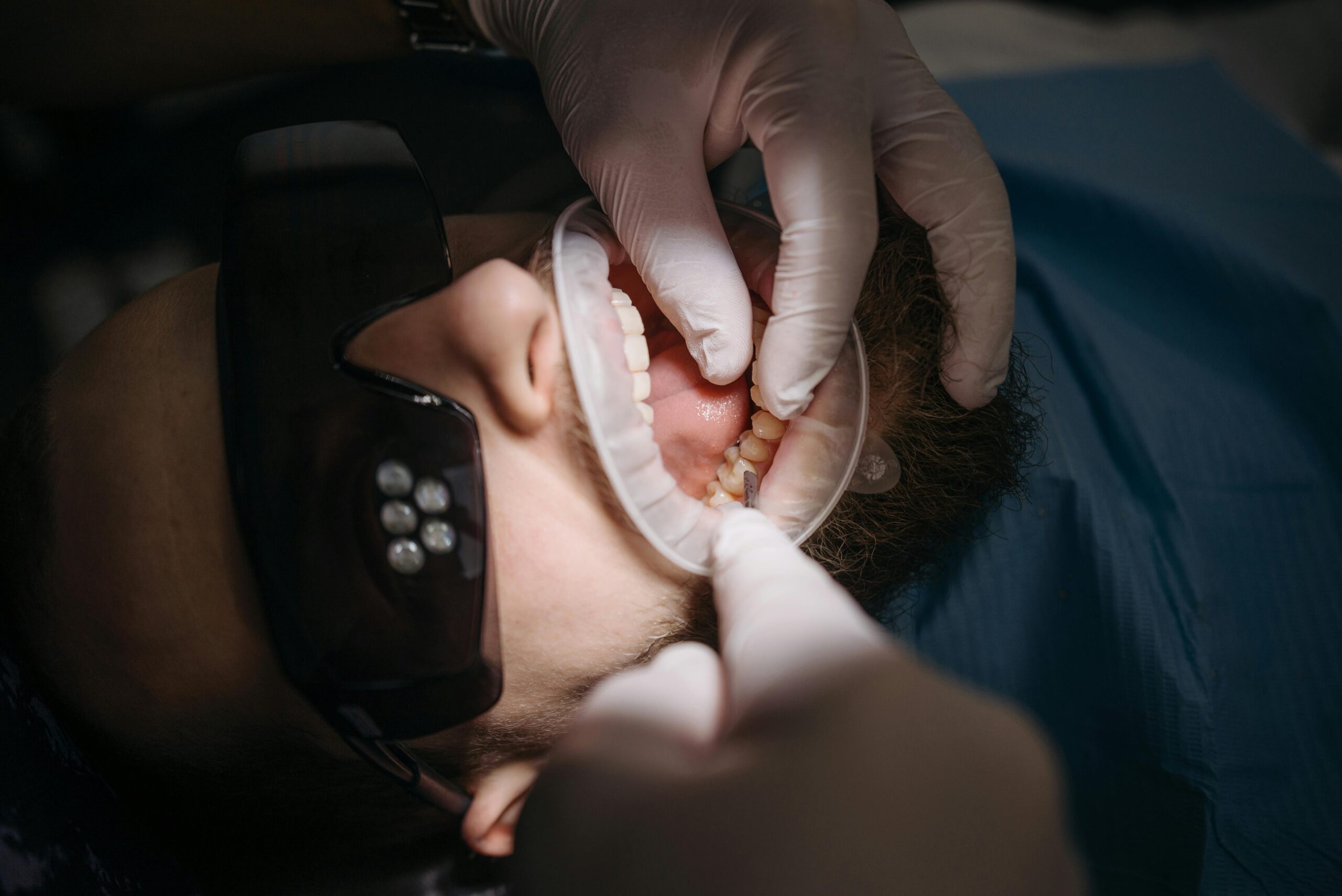Understanding Gentle Dental Practices
Gentle dental practices focus on reducing stress and discomfort at every step of care. This approach blends skilled technique with clear communication, a calm environment, and thoughtful pacing so visits feel manageable. It aims to make treatment easier for people with fear, a strong gag reflex, past difficult experiences, or sensitivity. In short, gentle dentistry is about treating teeth and the person attached to them.
In practice, it looks like this:
- Listening first: discussing goals, past experiences, and setting a stop signal.
- Tell–show–do: explaining and demonstrating before starting, so there are no surprises.
- Comfort-focused numbing: topical gel first, then slow, well-placed local anesthesia.
- Minimally invasive techniques and gentle tissue handling to reduce soreness.
- Managing sounds, lights, and water to lower sensory overload; offering breaks.
- Shorter, well-paced visits or staging care for longer procedures.
- Distraction and relaxation supports, such as guided breathing and music.
- When needed, medication-assisted options to lower anxiety.
These steps help many patients who delay care because of fear or prior pain. Surveys of dental patients consistently highlight the importance of clear explanations, effective pain control, and respect for personal preferences—core parts of comfortable dental care [1].
For some, extra help is appropriate. If worry or a strong gag reflex makes treatment hard, ask about our gentle oral sedation options, which can make longer visits feel shorter and calmer while you remain responsive and monitored throughout: learn about oral sedation and what to expect. Your dentist can match the plan to your needs—sometimes that means a brief desensitization visit first, or scheduling care in smaller steps. The goal is steady, safe progress with as little stress as possible.
Benefits of Gentle Dentistry for Patients
Gentle dentistry helps you feel safer, more comfortable, and more in control at every visit. By easing anxiety and reducing discomfort, it makes it easier to get the care you need on a regular schedule. Many patients find they can sit longer, tolerate procedures better, and recover with less soreness when care is calm, well-paced, and clearly explained.
Comfort-focused techniques start before any tools touch your teeth. Clear “what to expect” conversations, a chance to ask questions, and a shared stop signal lower stress. Thorough numbing with topical gel first and slow, well-placed local anesthesia helps procedures feel manageable. Minimally invasive methods and gentle tissue handling can mean less swelling and tenderness afterward, so you can get back to normal activities sooner.
The benefits extend to your overall oral health. When visits are easier, people tend to attend routine checkups and address small problems early, which often prevents urgent pain or more complex treatment later. A calmer experience also helps people with strong gag reflexes, high sensitivity, or past negative experiences complete needed care without feeling overwhelmed.
For example, a patient needing endodontic care can benefit from careful numbing, rubber-dam isolation that keeps the area dry without gagging, and step-by-step updates that reduce surprises. If you’re curious about what a comfortable root canal visit involves, see our overview of gentle root canal treatment.
Even for procedures that sound intimidating—like third molar extraction—planning with comfort in mind makes a difference. This might include shorter, staged appointments, distraction techniques, and, when appropriate, medication-assisted options tailored to your needs. You can learn more about how we approach care around extractions in our guide to wisdom tooth removal with patient comfort at the center.
Over time, these steps build trust and help replace fear with confidence. Patients often report better sleep the night before visits, lower tension during treatment, and improved willingness to keep up with cleanings and follow-ups. The goal is simple: effective care that respects you—your pace, your preferences, and your comfort—every time.
What to Look for in a Gentle Dentist
A gentle dentist combines skilled numbing, clear communication, and pacing that respects your comfort. Look for someone who listens first, explains what will happen in plain language, and checks in often during care. They should use techniques that lower pain and sensory overload, with options for anxiety support when needed.
At a first visit, notice whether the team asks about past experiences, sensitivities, and your goals. You should be offered a simple stop signal and time to ask questions. Before treatment, they explain how they will get you numb—usually with a topical gel, a slow, well-placed local anesthetic, and enough time for it to work—then they test the area before starting. Good communication reduces surprises and helps you feel in control.
Technique matters, too. Gentle care favors minimally invasive approaches and careful tissue handling to reduce soreness afterward. Practical comforts—like managing water spray and suction, giving rest breaks, using bite blocks to relax the jaw, and adjusting lights or sounds—can make a big difference if you are sensitive or have a strong gag reflex. For those with higher anxiety, ask how the office matches calming options to your needs, from coaching and desensitization visits to medication-assisted care; you can read more about how we approach deep sedation when it’s appropriate: learn about deep sedation for longer or complex visits.
Transparency is another hallmark. Expect a clear discussion of choices, benefits, and risks, along with a shared plan if you prefer shorter or staged appointments. A respectful office documents your comfort preferences, offers written after-care instructions, and follows up when appropriate. You should never feel rushed or pressured into a decision.
Simple questions can help you decide: How will you keep me comfortable? What’s the plan if I feel anxious mid-visit? Can we pause or spread treatment out? What signs will you watch for to make sure I’m numb? The answers should be specific and easy to understand. When you feel heard, know what to expect, and see thoughtful steps to keep you comfortable, you’ve likely found the right fit.
Pain-Free Dentistry: Myth or Reality?
“Pain-free dentistry” is a goal, not a magic switch—but for most patients, we can make treatment feel very comfortable. With good numbing, gentle technique, and clear communication, you should not feel sharp pain; you may still notice pressure, vibration, or cool water. For some people and some inflamed teeth, getting fully numb takes extra steps, but there are reliable ways to improve comfort. The aim is simple: no surprises and steady control of sensation throughout your visit.
Effective numbing starts before the needle ever touches tissue. A topical gel takes the sting off the surface, then local anesthetic is placed slowly and precisely, with time allowed for full effect. Your dentist tests the area and can add more anesthesia if you still feel anything sharp. When tissues are inflamed, supplemental methods—such as targeted injections around a single tooth or into the bone, adjusting anesthetic type, warming or buffering the solution, and careful pacing—can make a big difference so you stay comfortable during care.
How you feel is not just about nerves—it’s also about stress. A calm room, tell–show–do communication, and a shared stop signal help your body relax, which lowers pain perception. Light sedation options (like nitrous oxide or a prescribed pill when appropriate) can further reduce anxiety so numbing works better and time feels shorter. Some procedures are naturally easier on tissues; for example, minimally invasive bonding often needs little or no numbing because it removes very little tooth structure. If you’re curious, see how we approach gentle dental bonding and what to expect.
What should you expect in the chair? Frequent check-ins, the ability to pause, and top-ups of anesthetic as needed. You’ll likely feel pressure or vibration from instruments but not sharp pain; if you do, raising your hand lets the team adjust right away. After treatment, some tenderness is normal and usually manageable with cold packs and over‑the‑counter anti‑inflammatories unless your dentist advises otherwise. Even for bigger repairs, comfort-focused steps—like isolating the tooth well, protecting your lips and cheeks, and pacing the visit—help keep things manageable; learn more about what a comfortable crown or bridge visit involves. In short, pain-free dentistry is a realistic experience for many patients, and thoughtful planning brings most others very close to that goal.
Comfortable Dental Care: Techniques and Tools
Comfortable dental care blends skilled numbing, gentle hands, and smart technology to reduce stress and sensation at every step. We use methods that quiet the sting, control water and noise, and protect your lips, cheeks, and tongue so visits feel easier. The goal is simple: effective treatment with the least disruption to how you feel during and after the appointment.
Comfort starts with numbing done right. A topical gel takes the edge off the surface, then local anesthetic is placed slowly and precisely, with time allowed for full effect. If a tooth is inflamed, your dentist can add targeted “supplemental” injections around the tooth or into the supporting bone to keep you comfortable, and will test the area before proceeding. Small touches—warming or buffering the anesthetic, stretching gently, and pausing as needed—further reduce sting and pressure while the area gets fully numb.
We also protect soft tissues and manage sensations that commonly bother patients. Rubber-dam isolation or soft barriers keep the area dry and help you avoid water pooling; high‑volume suction and careful angling of spray minimize sounds and tickling. Bite blocks let your jaw rest, and lip/cheek shields prevent rubbing. Minimally invasive techniques and delicate tissue handling reduce post‑visit soreness. For conservative cosmetic work, careful planning can limit drilling and shorten chair time; learn how we approach this in our guide to custom porcelain veneers with a light touch.
Stress control matters, too. Tell–show–do communication, a clear stop signal, paced breaks, guided breathing, music, and other distraction tools help your body relax so numbing works better and time feels shorter. In children, studies show that sensory distraction can lower dental anxiety during visits [2]. When appropriate, medication‑assisted options are available and tailored to your health and goals.
Modern digital tools add comfort by simplifying steps that used to be awkward. Intraoral scanners capture a 3D image without trays or “goop,” which many patients find easier—especially if they have a strong gag reflex. These scans support crowns, veneers, and clear aligner orthodontic care, and can improve fit and communication during planning [3]. If you’re considering tooth movement, see how we make clear aligner treatment feel smooth from start to finish.
Choosing an Anxiety-Friendly Dentist
An anxiety-friendly dentist takes time to understand your worries and adapts care so you feel safe and in control. Look for clear, simple explanations, a shared stop signal, and a plan that matches your pace—short visits at first, breaks when needed, and careful numbing. The right office shows patience, checks in often, and offers options for calming support when appropriate.
Start with the first contact. Notice whether the team listens, offers unrushed answers, and can schedule at a quieter time of day if that helps. Ask if you can begin with a meet-and-greet or a brief desensitization visit to get used to the space and sounds. If timing matters for you, check the office’s current hours and choose a slot that feels least stressful.
During the exam, small steps make a big difference. You should hear a simple “what to expect” before anything begins, followed by tell–show–do so there are no surprises. Numbing should be done with a topical gel, slow local anesthesia, and enough time for it to work; your dentist will test the area and top up if needed. Sensory details—like bright lights, water spray, and vibration—should be managed with shields, suction, and breaks. You decide the pace, and raising your hand should pause treatment right away.
Good communication continues after the exam. Expect a clear, written plan with choices, benefits, and risks, plus notes about your comfort preferences so every visit builds on what worked. If anxiety is high, ask how the office matches options such as guided breathing, distraction, and medication-assisted care to your health and goals. Prefer to start small? Many patients begin with low‑stress, cosmetic steps to rebuild confidence—like gentle, step‑by‑step teeth whitening—before moving to more involved care.
Helpful questions include: How will you keep me comfortable if I feel nervous? What’s our stop signal? How will you confirm I’m fully numb before you start? Can we stage treatment in shorter visits? The answers should be specific and easy to understand. When you feel heard and the plan fits your pace, you’ve found a supportive partner in care.
Traits of a Compassionate Dentist
A compassionate dentist blends skill with empathy. They listen closely, explain steps in plain language, and pace care so you feel safe and in control. Comfort-focused technique and respect for your preferences guide every decision, from numbing to follow‑up.
Communication is the first trait you’ll notice. A caring dentist invites your story, sets a simple stop signal, and checks in often. They give clear “what to expect” explanations and answer questions without rushing. This approach builds trust and improves satisfaction because people feel heard and involved in their care [4].
Technical skill supports that kindness. Gentle care means thorough, well‑timed numbing with topical gel first and slow local anesthesia, then testing the area before starting. The dentist manages bright lights, sounds, and water spray to reduce sensory overload, and offers breaks to prevent fatigue. Minimally invasive methods and delicate tissue handling help reduce soreness afterward, while careful isolation protects lips, cheeks, and tongue throughout the visit.
Personalization is another hallmark. A compassionate dentist creates a plan that matches your goals, health history, and pace—sometimes starting with shorter visits or desensitization. When choices exist, they explain benefits and risks in simple terms and support your decision. For example, if you’re missing a few teeth, they can review conservative options like well‑designed partial dentures and how they restore function and appearance.
Follow‑through completes the picture. You receive written after‑care steps, realistic expectations for comfort, and, when appropriate, a check‑in to see how you’re doing. Notes about what helped—music, breaks, a certain numbing approach—are saved so each visit improves on the last. If you’re exploring full‑arch solutions, a supportive dentist will walk you through implant‑retained choices, such as snap‑in implant dentures with patient‑centered planning, at a pace that fits you.
Managing Dental Anxiety: Tips and Strategies
Dental anxiety is common, and it can be managed with the right plan. The key is to build control into your visit: clear communication, thoughtful pacing, and simple calming tools. Tell your dental team what worries you, agree on a stop signal, and use a few proven relaxation methods so treatment feels safer and more predictable.
Start before the appointment. Share your triggers and past experiences so the team can shape the visit around them. If helpful, request a brief meet-and-greet or desensitization visit to get used to the space and sounds. Schedule at a quieter time of day, skip extra caffeine, and eat a light, normal meal so your blood sugar stays steady. If medication-assisted care is planned, arrange a ride and follow the pre‑visit instructions you’re given.
Build control in the chair. Ask for a simple “raise your hand to pause” signal and a short “what to expect” before each step. Numbing should be layered—topical gel first, then slow, well‑placed local anesthetic—with time to work and a test before starting. Request practical comforts such as sunglasses for light, headphones for sound, a bite block to rest your jaw, and suction to manage water. Short, planned breaks can prevent overwhelm during longer visits.
Use easy relaxation tools that work in minutes. Try paced breathing: breathe in through your nose for four seconds and out for six; repeat for a few minutes to lower muscle tension. Add a brief body scan—soften your forehead, drop your shoulders, unclench your tongue and hands. If your mind races, use a grounding exercise: notice five things you can see, four you can feel, three you can hear, two you can smell, and one you can taste. Music, guided imagery, or a calming podcast can also shift focus away from dental sounds.
After the visit, debrief with your team about what helped and what didn’t, and save those notes for next time. Many people do best starting with shorter, success‑building appointments and then stretching to longer ones. If anxiety remains high or a strong gag reflex makes care difficult, ask about tailored options—including coaching, desensitization sessions, and, when appropriate, light or deeper sedation delivered by trained clinicians with monitoring. The goal is steady progress with as little stress as possible.
The Role of Communication in Gentle Dentistry
Communication is the engine that makes a calm, low‑stress dental visit possible. It turns unknowns into a clear plan, gives you control, and helps your dentist match care to your comfort. When expectations are set and questions are welcomed, numbing works smoother, time feels shorter, and treatment is easier to tolerate.
It starts before you sit down. Sharing past experiences, triggers, and goals lets the team shape the visit around you. You agree on a simple stop signal, choose a pace that feels safe, and hear a short preview of each step so there are no surprises. If you have a strong gag reflex or high sensitivity, the plan can include extra suction, positioning changes, or shorter, staged visits.
During treatment, “tell–show–do” and signposting lower stress: first you’ll feel gel, then slow numbing, then we’ll test the area. Your dentist checks in often, watches body cues, and invites you to pause at any time. They explain what sensations are normal—pressure, vibration, cool water—and what is not, and they adjust if you feel anything sharp. This steady back‑and‑forth builds trust and keeps discomfort under control.
Plain language matters. Clear words replace jargon, and choices are explained with simple benefits and risks. Your dentist may use a quick “teach‑back” (“Can you tell me the plan in your own words?”) to be sure everything makes sense. Respectful communication also means validating worry (“It’s normal to feel nervous”) and offering options—like breaks, music, sunglasses, or stronger numbing—so you stay in charge.
Good communication continues after you leave. You receive written, step‑by‑step after‑care, what’s normal to feel, and when to get in touch if something seems off. Notes about what helped—extra time for numbing, a certain position, a favorite playlist—are saved so the next visit is even smoother. The same approach makes bigger plans feel manageable; for example, a full‑arch solution becomes less daunting when the timeline, visits, and comfort steps are laid out clearly—see how we plan patient‑centered All‑on‑4 implant dentures with comfort in mind. In short, clear, two‑way communication is not a bonus; it is the core of a truly gentle experience.
Frequently Asked Questions About Gentle Dental Care
This section answers common questions about what “gentle” care looks like, how it feels, and how you can stay in control. The short version: we focus on clear communication, thorough numbing, and calm pacing so visits are easier and more predictable. You help set the plan, and we adjust along the way.
What does “gentle” mean in practice? It means we listen first, explain every step, and invite questions. Comfort starts with a stop signal, layered numbing, and time for it to work. We also manage lights, sounds, and water spray, and we build in breaks as needed.
Will I feel pain? You should not feel sharp pain. It’s normal to notice pressure, vibration, or cool water. If you feel anything sharp, raise your hand and we pause to add anesthesia or adjust. Inflamed teeth can need extra numbing steps, which we plan for.
Can you help with a strong gag reflex? Yes. We use positioning, extra suction, and isolation to limit water pooling, plus smaller tools and paced breaks. Breathing through your nose, focusing your feet on the footrest, or using music can also reduce the urge to gag.
Do I have to be sedated? No. Many patients do well with communication, relaxation techniques, and careful numbing alone. When anxiety is higher, medication‑assisted options are available when appropriate and tailored to your health history. You remain monitored and the plan is reviewed beforehand.
How do you keep me numb the whole time? We start with a topical gel, then place local anesthetic slowly and precisely, allowing time for full effect. We test the area before starting and can “top up” during care. Supplemental techniques around a single tooth can help if tissues are inflamed.
Can long treatments be split into shorter visits? Absolutely. Staging care is common and can make bigger plans feel manageable. We agree on goals, set time limits for each visit, and carry your comfort preferences forward so each appointment builds on what worked.
What if I’ve had a bad experience before? Tell us what happened and what you fear most. We can start with a meet‑and‑greet or a brief desensitization visit, go slower, and use extra reassurance and control steps. There’s no judgment—just a plan that fits your pace.
References
- [1] Patient Experience and Expectations in Oral Health Care: A Nation-Wide Survey. (2025) — PubMed:39510930 / DOI: 10.1016/j.identj.2024.10.011
- [2] Comparative evaluation of effectiveness among various sensory distractors for reducing dental anxiety in pediatric population aged 6-9 years – A randomized controlled trial. (2025) — PubMed:40159612 / DOI: 10.4103/jisppd.jisppd_18_25
- [3] Recent Advances in Intraoral Scanners. (2024) — PubMed:39382136 / DOI: 10.1177/00220345241271937
- [4] The Psychological Attitude of Patients toward Health Practitioners in Lebanon. (2015) — PubMed:26713291 / DOI: 10.4103/1947-2714.168663




